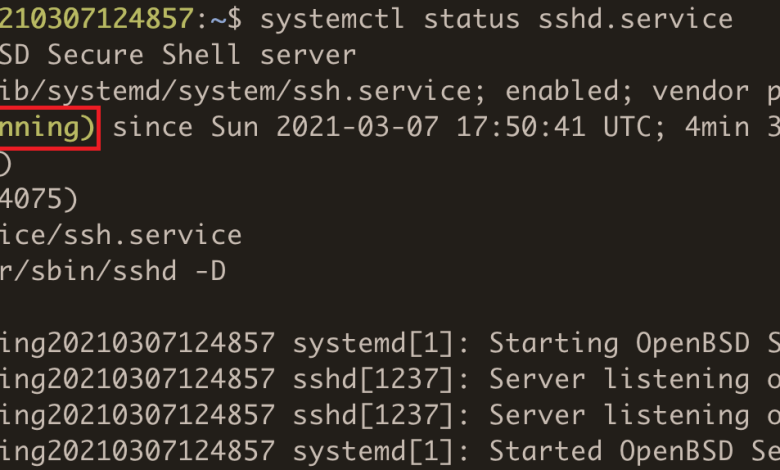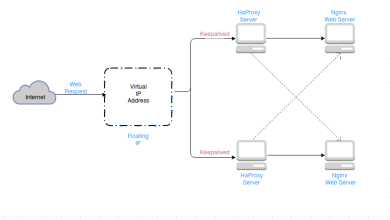How to Use the systemctl stop Command for Service Management

The systemctl command is an essential utility for managing services and system resources on Linux systems that use systemd. Among its various subcommands, the stop command allows administrators to stop active services effectively. This guide will provide a comprehensive explanation of the systemctl stop command, including its syntax, use cases, and practical examples, ensuring you have the technical depth to manage services proficiently.
Understanding systemctl
systemctl is the primary interface for interacting with the systemd init system. Introduced to replace older init systems like SysVinit and Upstart, systemd brings a unified framework for service management, logging, and dependency handling. The systemctl command is the go-to tool for controlling services, analyzing the system’s state, and managing unit files.
A service in the context of systemd is represented by a “unit.” These unit files define the behavior, dependencies, and execution conditions of the services or processes they control. Common unit types include:
- Service units (
*.service): Represent long-running processes. - Socket units (
*.socket): Define inter-process communication sockets. - Timer units (
*.timer): Schedule tasks.
The systemctl stop command specifically targets service units to cease their execution.
Syntax of systemctl stop
The basic syntax for the systemctl stop command is as follows:
systemctl stop [UNIT_NAME]Components:
systemctl: The main command for interfacing withsystemd.stop: The subcommand instructingsystemdto stop a specific service.[UNIT_NAME]: The name of the service or unit to be stopped, typically ending with.service(e.g.,nginx.service).
If the .service suffix is omitted, systemctl assumes it by default, making systemctl stop nginx equivalent to systemctl stop nginx.service.
How systemctl stop Works
The systemctl stop command halts the specified service gracefully. When executed:
ExecStopDirective Execution:systemdruns anyExecStopcommands defined in the service’s unit file.- Service Termination: If no
ExecStopcommand exists, the process associated with the service is terminated. - State Transition: The service transitions from an “active” to an “inactive” state.
Stopping a service does not disable it; the service will still start automatically during the next boot if it is enabled.
Practical Use Cases for systemctl stop
The systemctl stop command is invaluable in various scenarios, including:
1. Stopping Non-Essential Services
To optimize system performance, you might want to stop services that are not currently needed:
sudo systemctl stop bluetoothThis command halts the Bluetooth service, freeing system resources.
2. Managing Resource Conflicts
If two services conflict or one service depends on another being inactive, you can stop the conflicting service:
sudo systemctl stop apache2This is useful if you want to run a different web server, such as Nginx, on the same port.
3. Applying Configuration Changes
When modifying a service’s configuration file, stopping and restarting the service ensures the changes take effect:
sudo systemctl stop nginx
sudo systemctl start nginxAlternatively, use systemctl restart to achieve the same result in a single command.
4. Debugging and Maintenance
For troubleshooting or performing maintenance, you may need to stop a service temporarily:
sudo systemctl stop mysqlThis command halts the MySQL database service, allowing you to perform administrative tasks.
Examples of systemctl stop
Example 1: Stopping a Web Server
To stop the Nginx web server:
sudo systemctl stop nginxYou can verify the service’s status afterward:
sudo systemctl status nginxOutput:
● nginx.service - A high-performance web server and a reverse proxy server
Loaded: loaded (/lib/systemd/system/nginx.service; enabled)
Active: inactive (dead) since Fri 2025-01-18 14:32:00 UTC; 10s agoExample 2: Stopping Multiple Services
You can stop multiple services in one command by listing them:
sudo systemctl stop apache2 nginxThis halts both Apache and Nginx.
Example 3: Stopping a User Service
For services running under a specific user, use the --user flag:
systemctl --user stop my_custom_serviceThis command affects only the user’s instance of my_custom_service.
Differences Between stop, disable, and mask
While systemctl stop halts a running service, it’s important to understand its behavior compared to related commands:
stop
- Halts the service immediately.
- Does not prevent the service from restarting manually or during the next boot if enabled.
disable
- Prevents the service from starting automatically at boot.
- Does not stop a running service; you must use
stopexplicitly.
mask
- Completely disables the service, preventing it from being started manually or automatically.
- To mask a service:
sudo systemctl mask [UNIT_NAME]- To unmask it:
sudo systemctl unmask [UNIT_NAME]Verifying the Effects of systemctl stop
To confirm that a service has been stopped:
sudo systemctl status [UNIT_NAME]For example:
sudo systemctl status sshLook for Active: inactive (dead) in the output.
Additionally, you can check active services using:
systemctl list-units --type=service --state=activeThe stopped service should no longer appear in the list.
Common Pitfalls and Troubleshooting
1. Stopping Critical Services
Stopping essential services, such as networking or ssh, can render the system inaccessible, especially on remote servers. Always double-check before stopping critical services.
2. Dependency Management
systemd handles service dependencies intelligently. Stopping a service may also stop dependent services. Use --dry-run to preview changes:
sudo systemctl stop [UNIT_NAME] --dry-run3. Permission Issues
Most service management commands require root privileges. Use sudo to avoid permission errors.
Conclusion
The systemctl stop command is a vital tool for Linux administrators managing services on systems using systemd. By understanding its syntax, use cases, and potential pitfalls, you can confidently manage service states to optimize system performance and ensure reliability. Combining systemctl stop with other commands like start, restart, and status gives you robust control over your system’s behavior.





